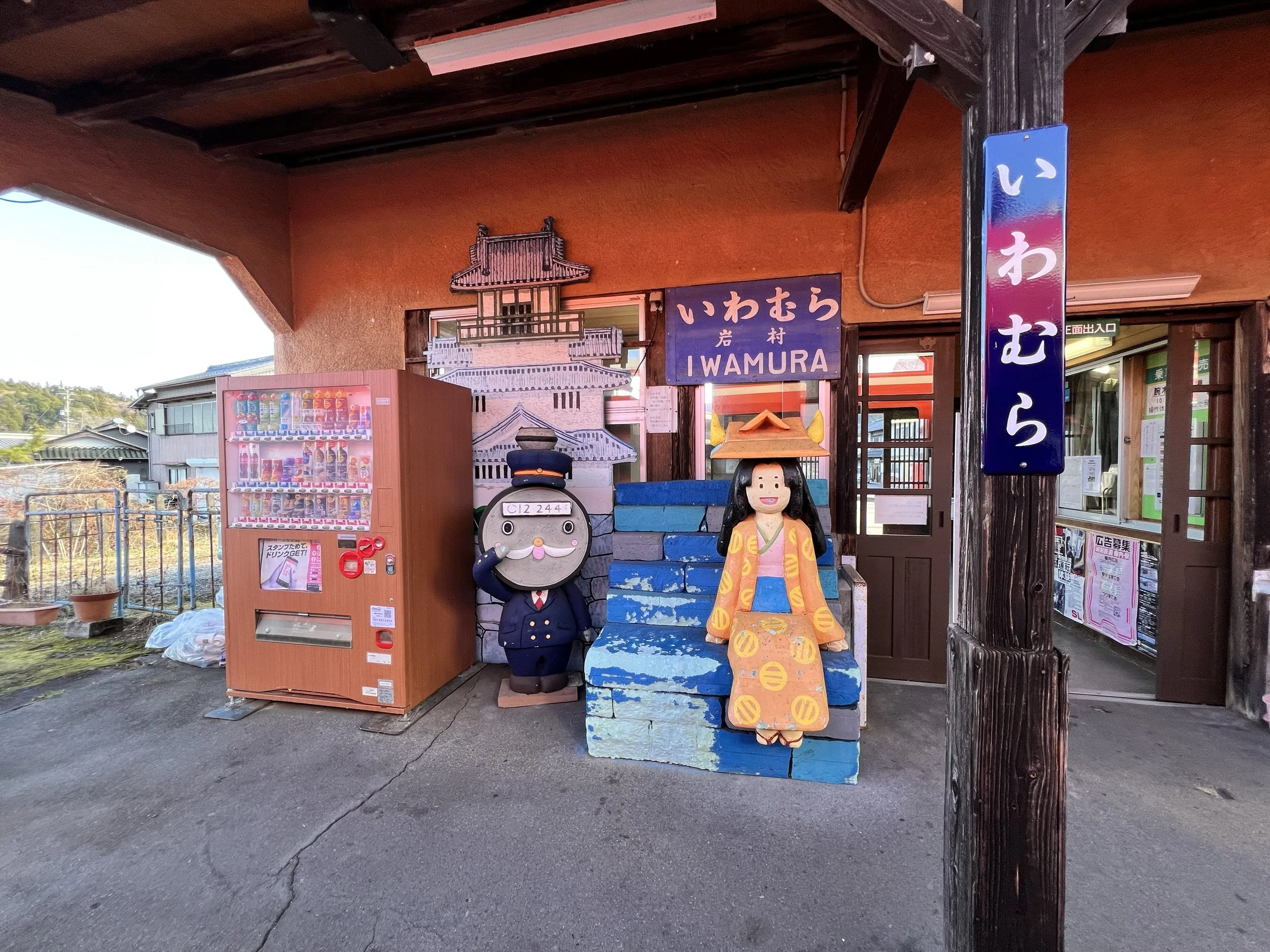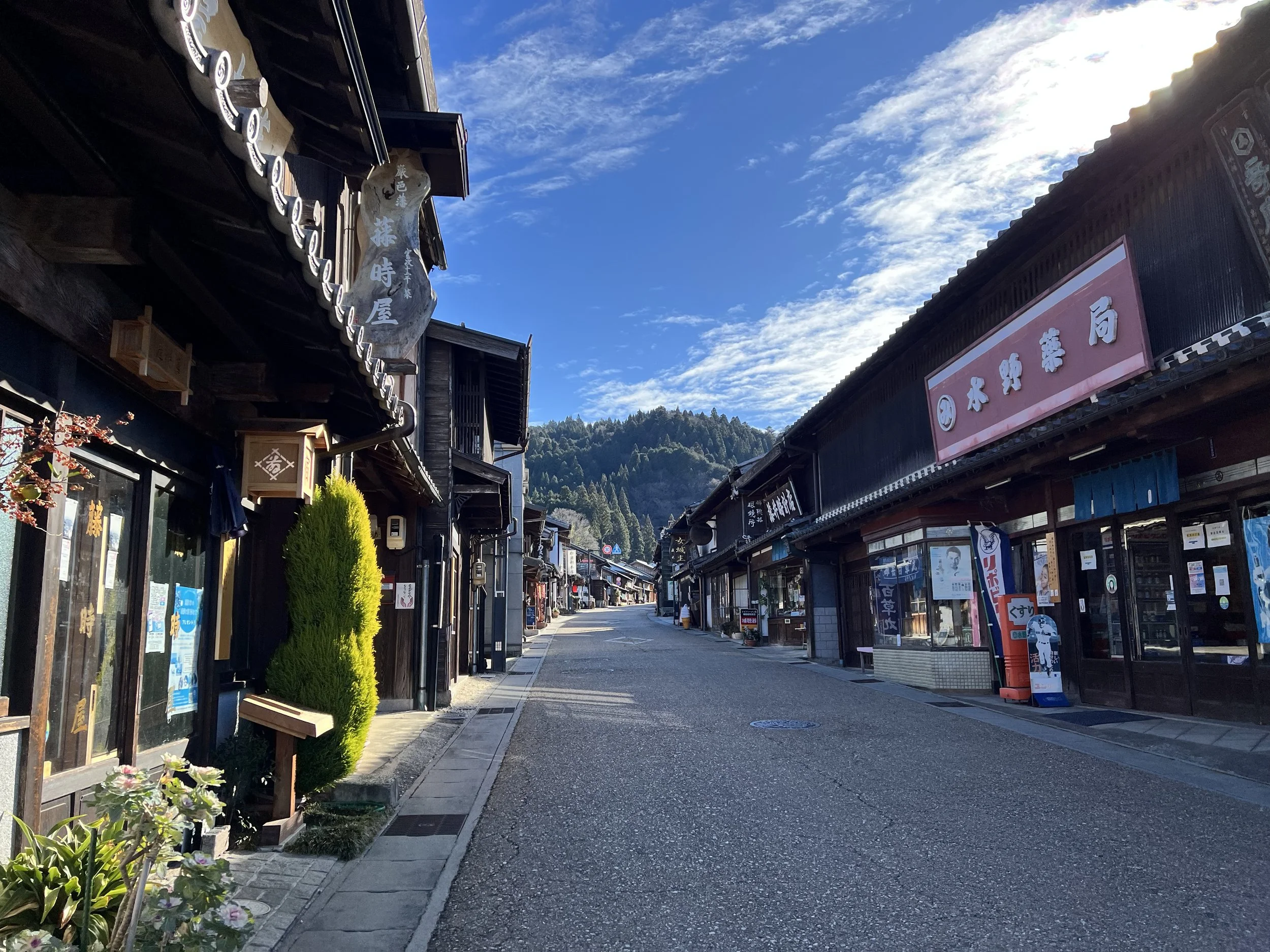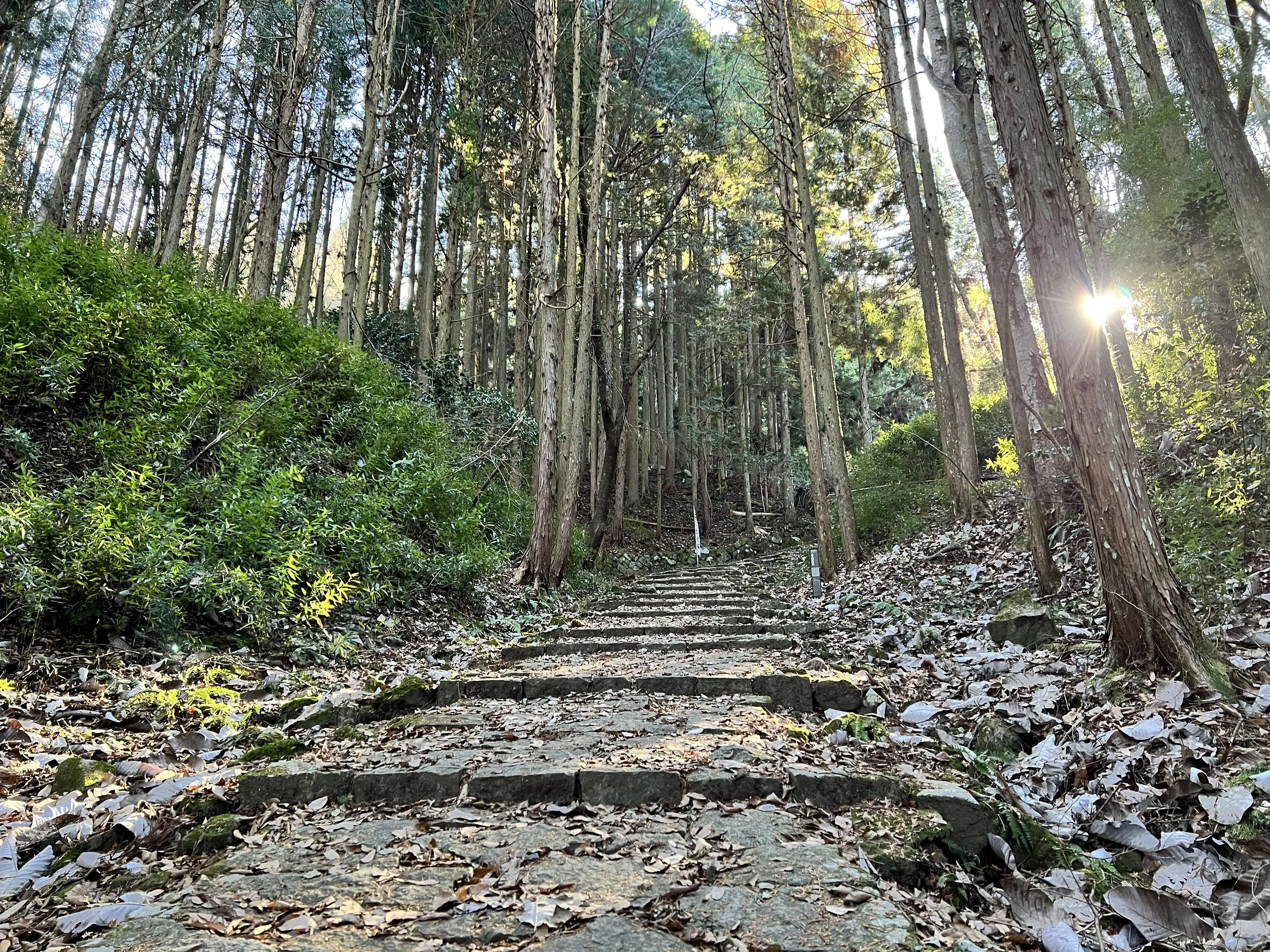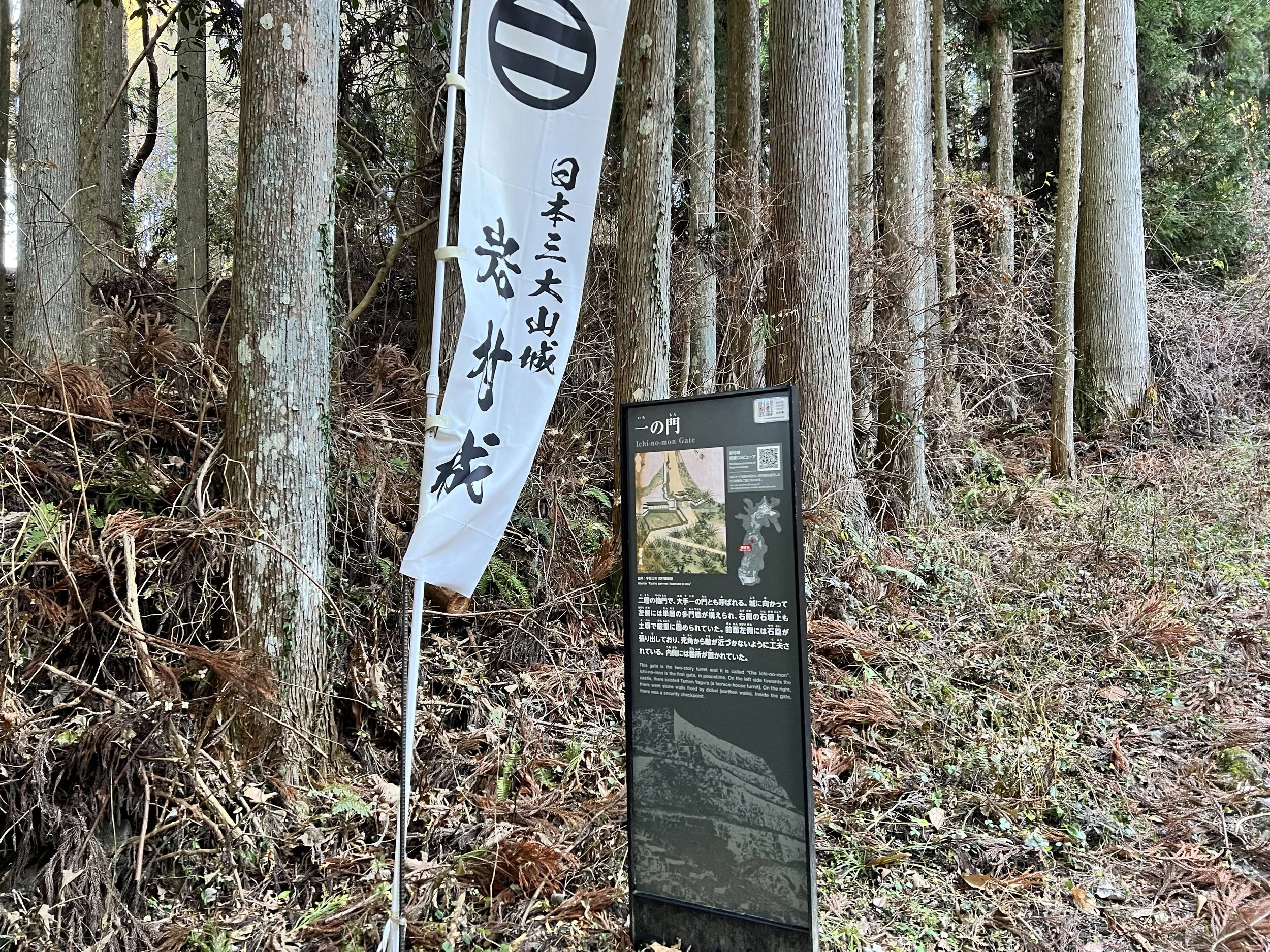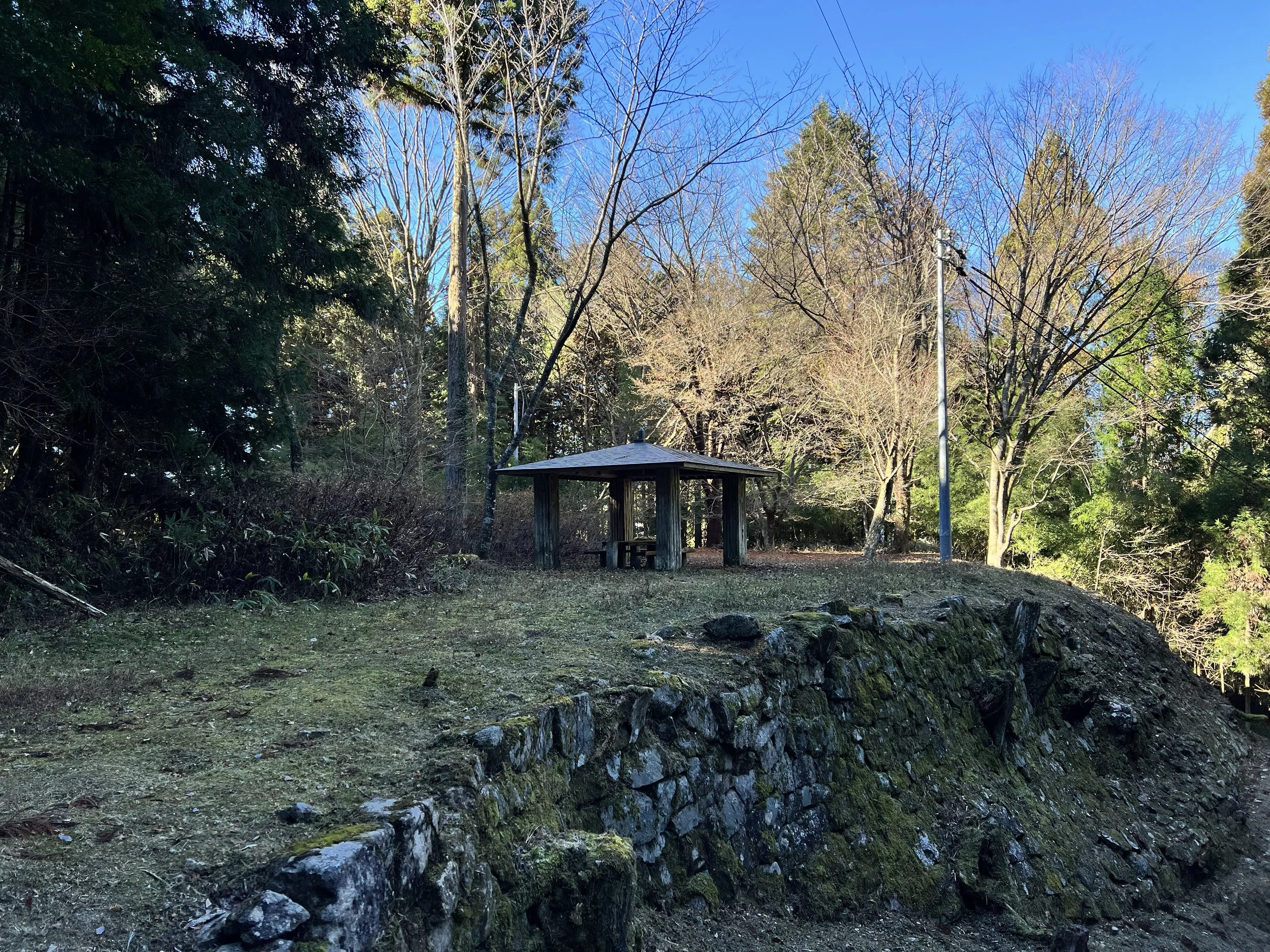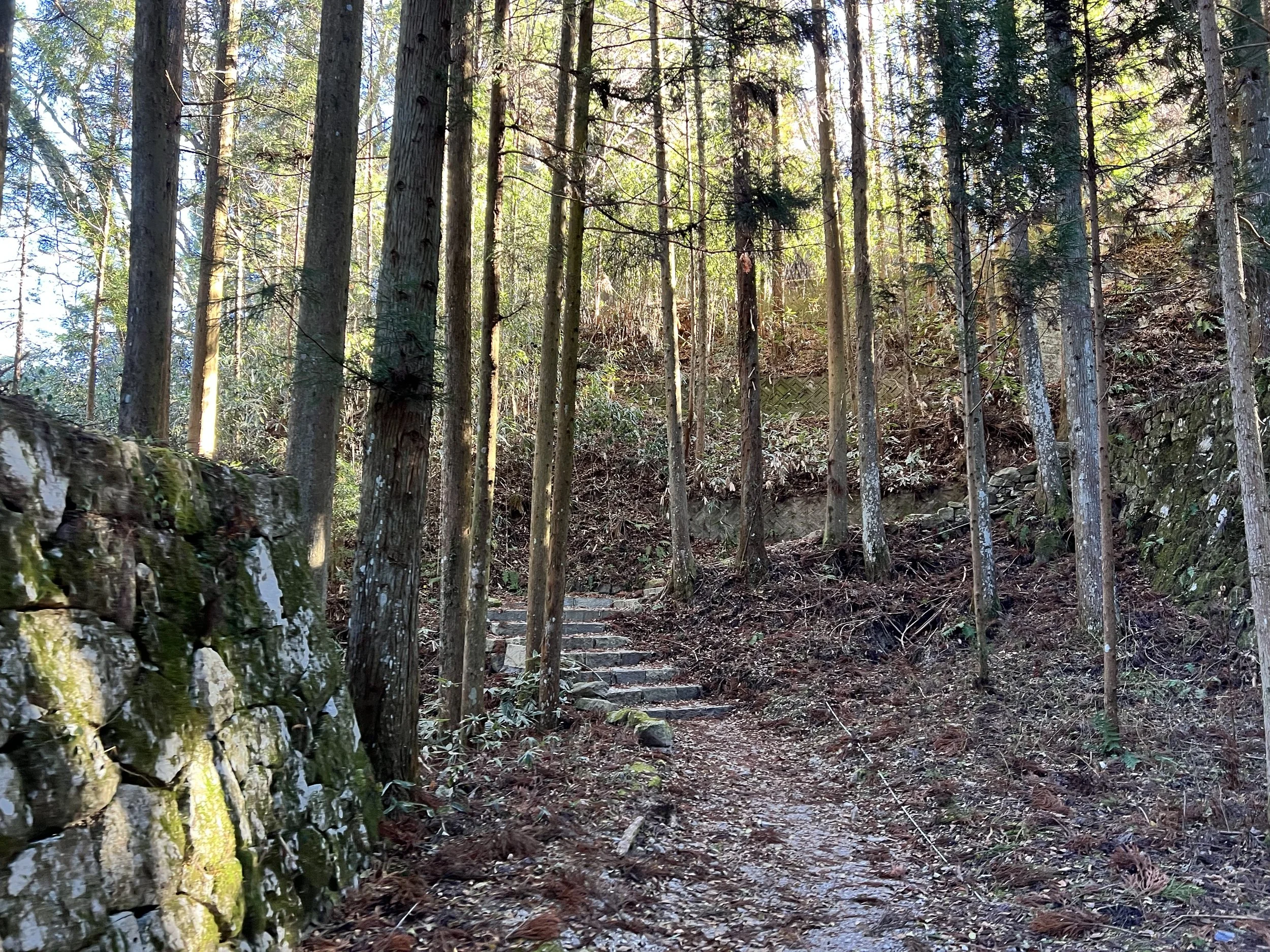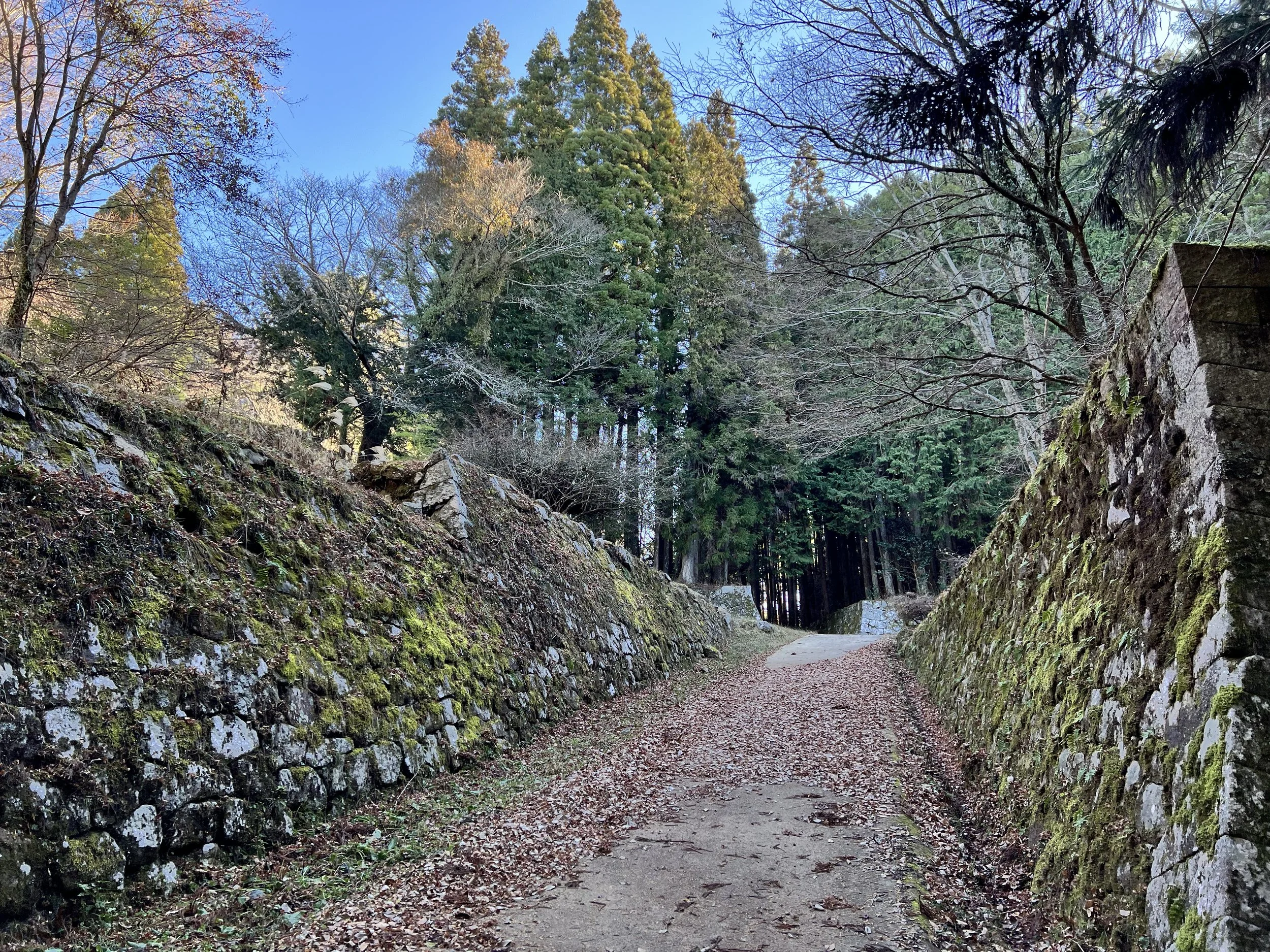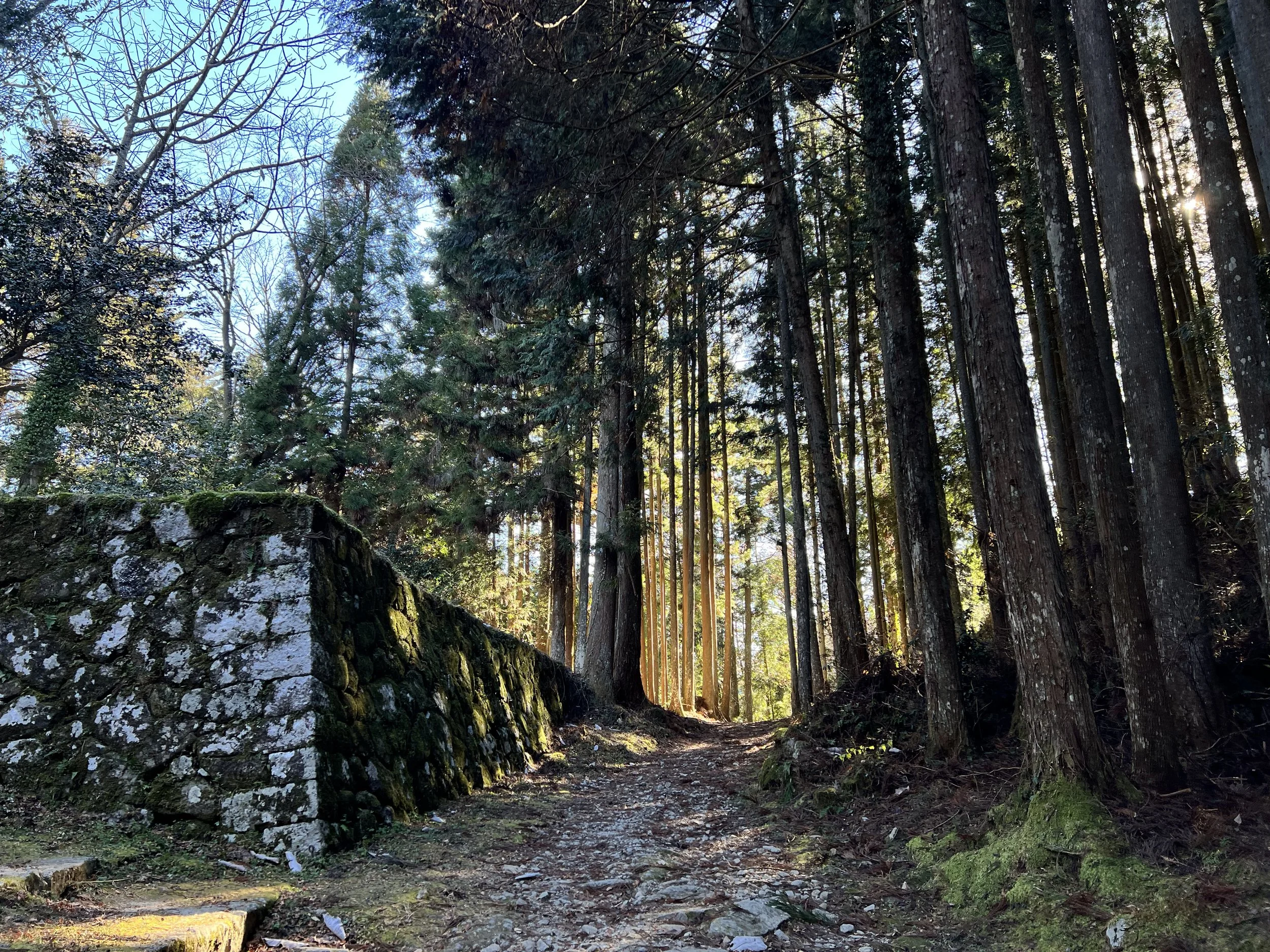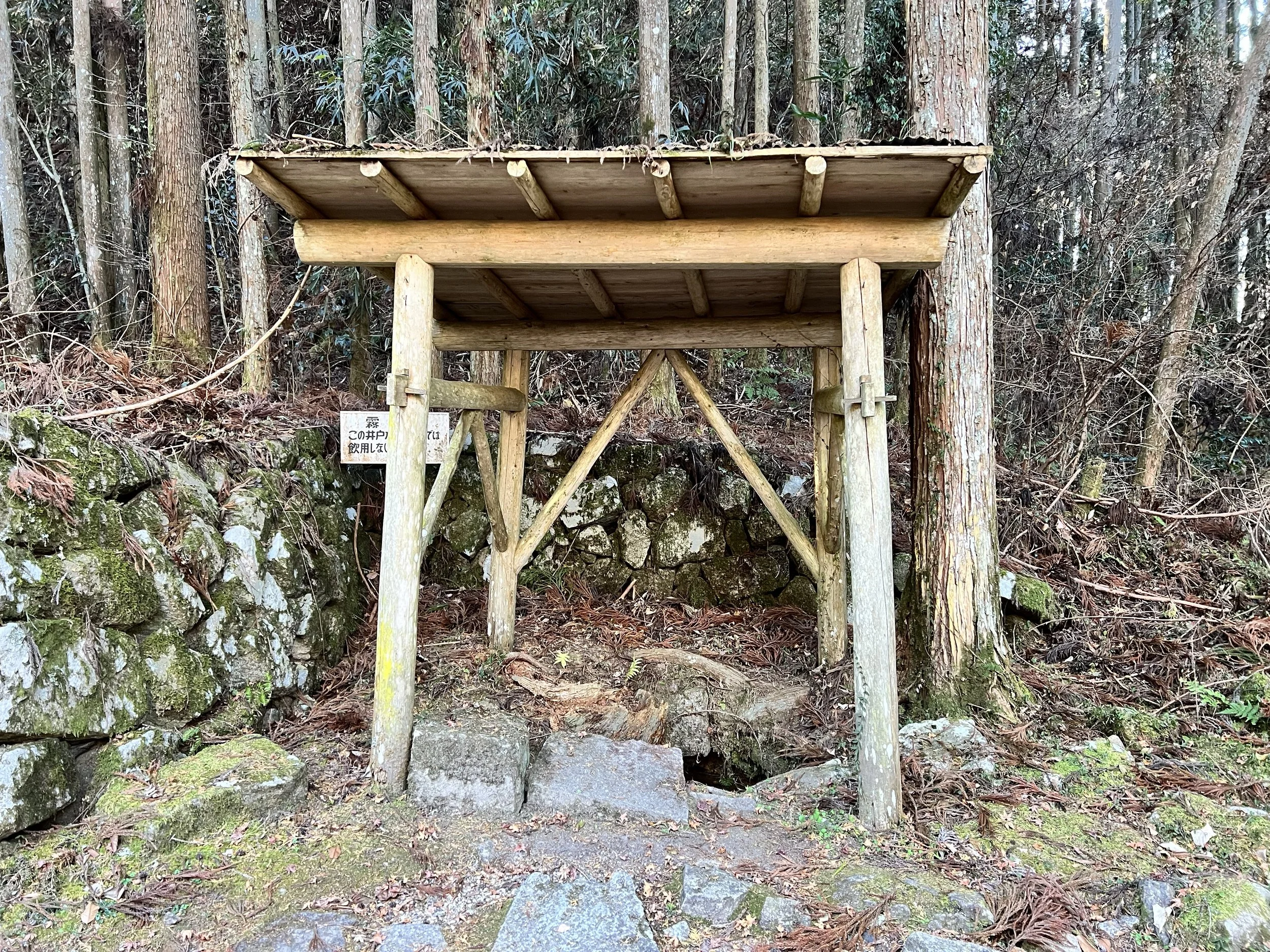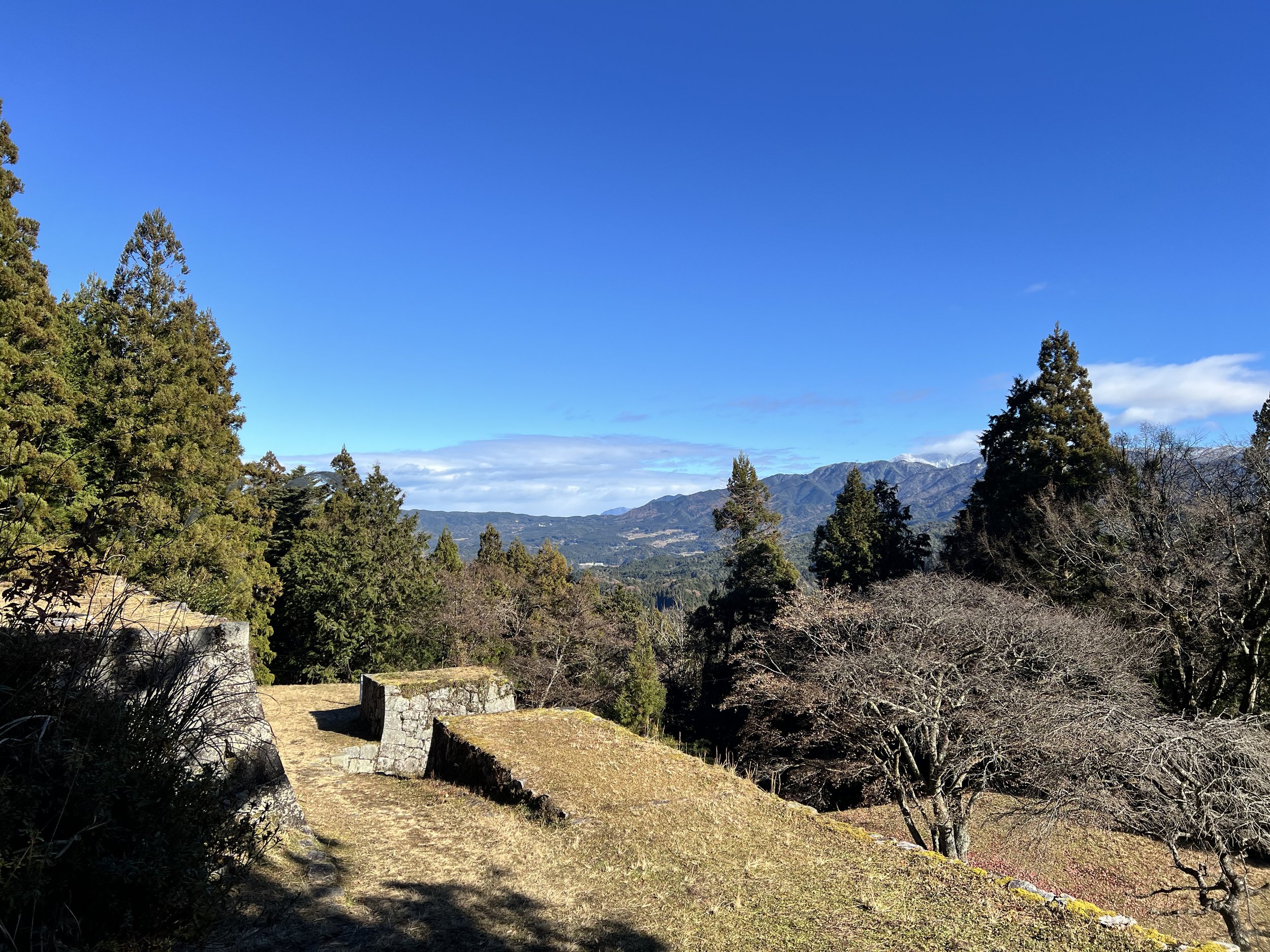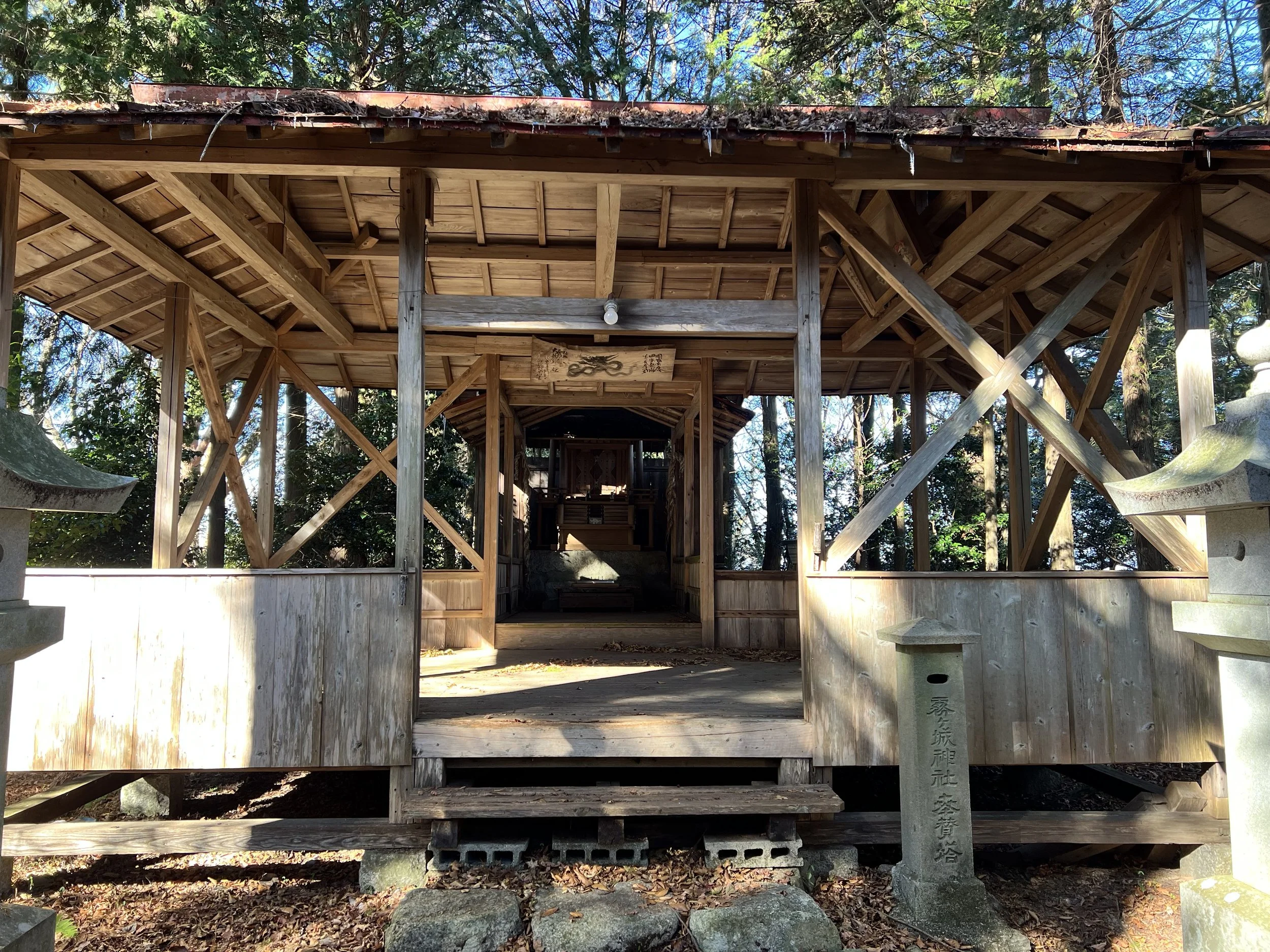Iwamura Castle Ruins - Gifu, Japan
Iwamura Castle Ruins had been on my list for years, but since it was a bit out of the way, I never made the detour on previous trips. This time, I finally decided to go—it fit perfectly into my route towards Nakatsugawa, where I’d be staying the night before beginning my Nakasendo hike.
The journey from Nagoya to Iwamura Station takes about two and a half hours and involves three trains. The last leg runs along the charming Akechi Railway between Ena Station and Akechi Station. Because the trains are infrequent, the first thing I did upon arriving at Iwamura Station was check the return schedule.
Iwamura is a beautifully preserved castle town with many Edo-period buildings still intact and in use. Visiting in winter meant I had the quiet streets almost entirely to myself—just a few locals going about their day. I walked through the town, admiring its wooden facades and narrow lanes, before stopping at the tourist information centre to ask about the castle ruins. The staff told me the museum was closed for the season, but the hiking trail was open. I thanked her and continued on, pausing briefly at the museum grounds before heading up the trail.
Iwamura Castle is one of Japan’s Three Great Mountain Castles, along with Takatori Castle in Nara and Bitchu Matsuyama Castle in Okayama. Built at an altitude of 717 metres, it was ingeniously designed to take advantage of the steep terrain for natural defence. Though the castle itself no longer stands, the stone walls remain—massive, intricate, and quietly impressive reminders of its former grandeur.
As I climbed the winding trail, the steepness made it easy to imagine the castle’s strategic importance and the remarkable craftsmanship required to build it centuries ago. At the summit, a small viewing area and an audio station recount the site’s history. The narration was entirely in Japanese, so I listened carefully, catching familiar words and piecing together fragments of the story. There’s also a stamp station at the top—I happily added the Iwamura Castle stamp to my collection before beginning my descent.
On the way down, I took a brief detour to visit a small shrine tucked into the hillside, then made my way back toward the station. With about an hour before my next train, I sat outside in the winter sun, enjoying the stillness and feeling grateful to finally see one of Japan’s highest-elevation castles.
History & Background
Iwamura Castle (岩村城) was originally constructed in the 13th century and later expanded during the Sengoku period. It was renowned not only for its high elevation—717 metres, making it one of Japan’s highest castle sites—but also for its strong defensive design that used the mountain’s steep ridges to its advantage.
The castle is also notable for its connection to Lady Otsuya, one of the few female castle lords in Japanese history, who ruled during the late 16th century. Although the castle eventually fell to Oda Nobunaga’s forces, the surviving stone walls and intricate terraces remain a testament to medieval Japanese castle engineering. Today, Iwamura Castle is recognized as one of Japan’s Three Great Mountain Castles (日本三大山城), alongside Takatori and Bitchu Matsuyama Castles.
Japan’s Three Great Mountain Castles: Read about the other two castle ruins here — Takatori Castle Ruins and Bitchu Matsuyama Castle.
Getting There
Iwamura Castle Ruins can be reached via Iwamura Station on the Akechi Railway, approximately two and a half hours from Nagoya. From Nagoya Station, take the JR Chuo Line to Ena Station (about 1 hour and 20 minutes), then transfer to the Akechi Railway towards Akechi Station (about 1 hour). Trains on the Akechi Railway are limited, so it’s best to check the return schedule upon arrival.
From Iwamura Station, it’s about a 15-minute walk through the historical castle town to the trailhead, and another 30 to 40 minutes to reach the castle ruins at the summit. The walk itself is part of the experience—passing through preserved Edo-period streets, traditional wooden houses, and quiet rural scenery before beginning the ascent to the ruins.
Route Overview
Distance: 5.91 km out & back (Iwamura Station)
Total elevation gain: 238 m
Duration: 1 hr 24 min (with breaks 1 hr 29 min)
Difficulty: Easy
Peak: Iwamura Castle Ruins 岩村城跡 717m
Cost Breakdown
Train: Nagoya Station → Ena Station — ¥1,170
Train: Ena Station → Iwamura Station — ¥490
Vending Machine: ¥140
